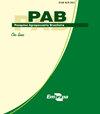Physiological and phenotypical effects of the overexpression of the OVP1 gene in Japonica rice
IF 0.7
4区 农林科学
Q3 AGRICULTURE, MULTIDISCIPLINARY
引用次数: 0
Abstract
Abstract The objective of this work was to evaluate the physiological, phenotypic, and gene expression parameters in genetically modified (GM) rice plants that overexpress the Oryza sativa Vacuolar H+-Pyrophosphatase 1 (OVP1) gene, compared with non-genetically modified (NGM) rice. GM and NGM plants of the BRSMG Curinga cultivar were evaluated in two experiments, in a laboratory and greenhouse, in a randomized complete block design, with four replicates. Agronomic traits of interest were estimated, and transcriptome analysis and gene expression quantification were carried out. GM plants showed a 31 and 21% higher number of spikelets per panicle and total number of grains per panicle, respectively, in comparison with NGM plants. Physiological changes occurred during the grain-filling stage, in which GM plants presented a photosynthetic rate and carboxylation efficiency 61 and 89% higher than those of NGM plants, respectively. The overexpression of the OVP1 gene favors the upregulation of some photosynthesis genes and the increase in the number of spikelets and in the photosynthetic rate, but does not favor the increase in grain yield.粳稻OVP1基因过表达的生理和表型效应
摘要本研究的目的是评价过表达Oryza sativa液泡H+-焦磷酸酶1 (OVP1)基因的转基因(GM)水稻植株与非转基因(NGM)水稻的生理、表型和基因表达参数。采用4个重复的随机区组设计,对BRSMG Curinga品种的转基因和非转基因植株进行评价。对感兴趣的农艺性状进行估计,并进行转录组分析和基因表达量化。转基因植株的每穗总粒数和每穗总粒数分别比转基因植株高31%和21%。灌浆期发生生理变化,转基因植株的光合速率和羧化效率分别比非转基因植株高61%和89%。OVP1基因的过表达有利于部分光合基因的上调,增加颖花数和光合速率,但不利于籽粒产量的提高。
本文章由计算机程序翻译,如有差异,请以英文原文为准。
求助全文
约1分钟内获得全文
求助全文
来源期刊

Pesquisa Agropecuaria Brasileira
农林科学-农业综合
CiteScore
1.20
自引率
0.00%
发文量
45
审稿时长
9-18 weeks
期刊介绍:
Pesquisa Agropecuária Brasileira – PAB – is issued monthly by Empresa Brasileira de Pesquisa Agropecuária – EMBRAPA, affiliated to Ministry of Agriculture, Livestock and Food Supply. PAB publishes original scientific-technological articles on Plant Physiology, Plant Pathology, Crop Science, Genetics, Soil Science, Food Technology and Animal Science.
Its abbreviated title is Pesq. agropec. bras., and it should be used in bibliographies, footnotes, references and bibliographic strips.
 求助内容:
求助内容: 应助结果提醒方式:
应助结果提醒方式:


